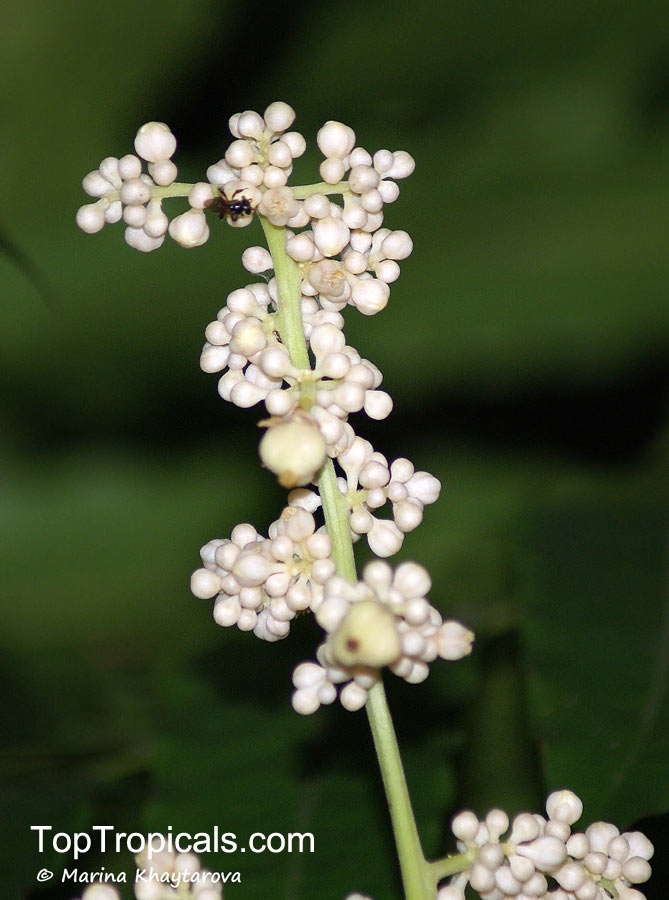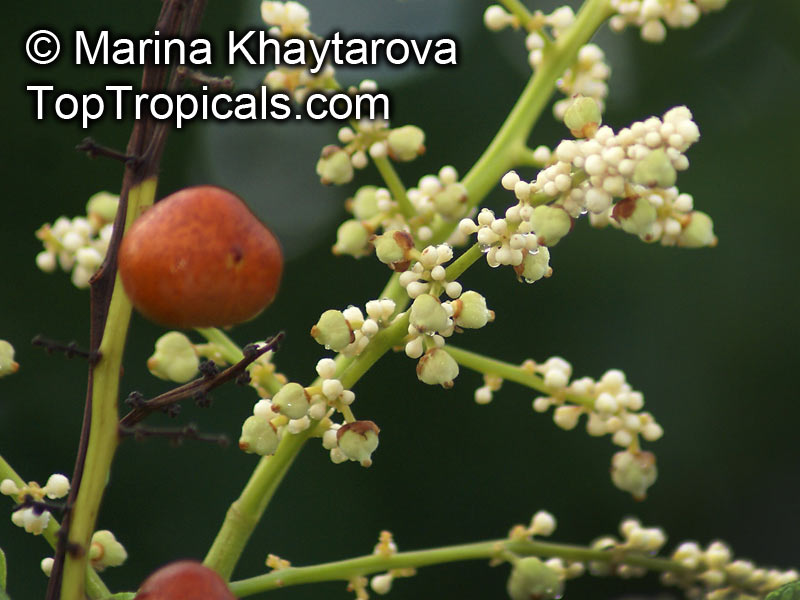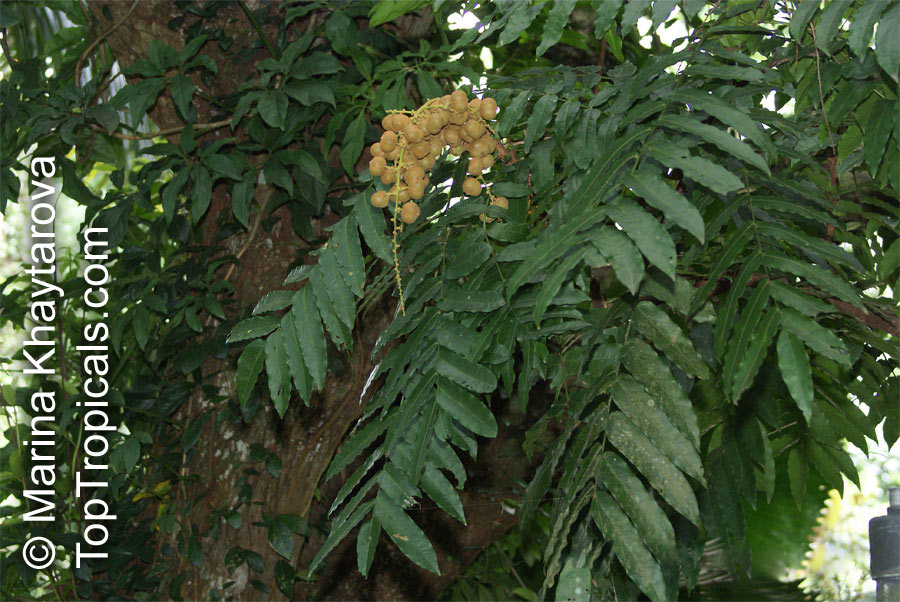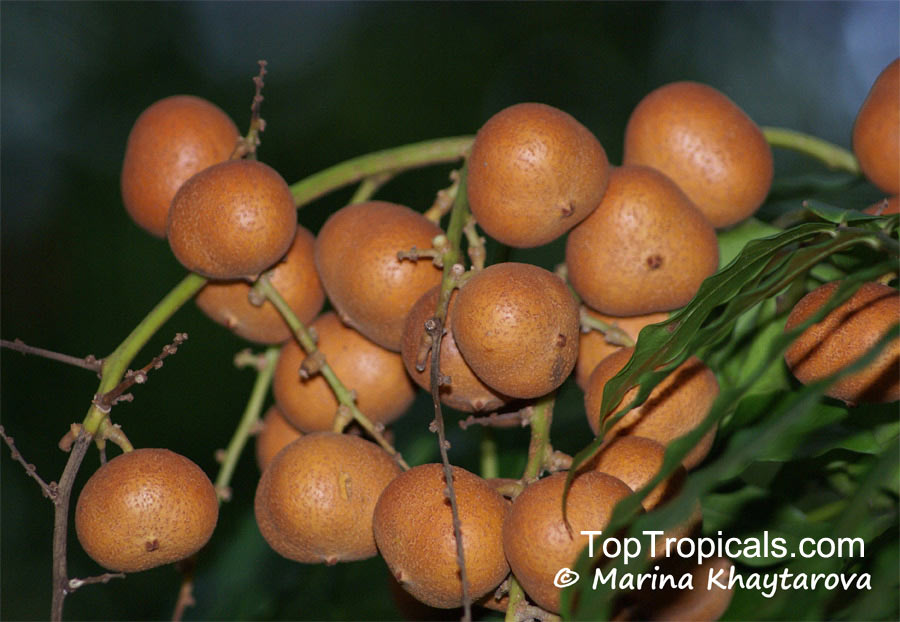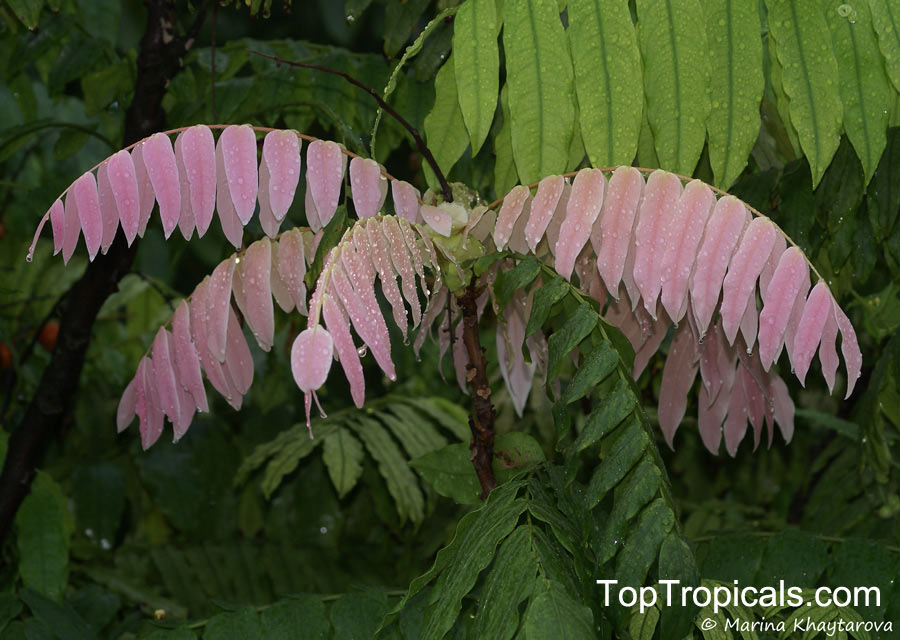Lepisanthes amoena (Malaysian Lepisanthes)
Top Tropicals Plant Encyclopedia
Botanical name: Lepisanthes amoena
Common names: Malaysian Lepisanthes, Buah Matahari
Family: Sapindaceae
Origin: Indonesia




Lepisanthes amoena is a small, evergreen tree native to Indonesia that has attractive foliage and edible fruits. This tree prefers full sun and well-drained soil, and it can grow between 10-20 feet in height. It is best grown in USDA Zone 9-11. In addition to being an attractive ornamental tree, Lepisanthes amoena produces edible fruit which are rather astringent to the taste. The small fruits have a waxy skin and are yellow in color when ripe. Due to their pleasant taste and appearance, the fruits are popularly used to create edible garnishes and as salad toppings. They also have several health benefits, including being a rich source of dietary fibre and various antioxidants which helps to fight disease-causing free radicals. The tree usually produces an abundance of fruits, with some trees yielding up to 40 kg of fruit each season.
To keep Lepisanthes amoena healthy and thriving, the soil should remain moist but not water-logged. Regular watering and applied mulch is recommended in order to help retain moisture and reduce the amount of water needed. Additionally, fertilizers and growth stimulants can be used to encourage strong and healthy growth. For those in cold regions, Lepisanthes amoena can also be grown in a large container as long as it is kept sheltered from frost and other harsh weather conditions, though it is best brought inside or in a pot during winter in cooler regions. The pot should be filled with an insulated potting soil mix that is not overloaded with fertilizer and is not allowed to dry out completely.
This low maintenance, tropical shrub is ideal for garden or yard decoration. With proper pruning, its natural form can be formed. When in full bloom, Centaurium erythraea displays impressive bright pink flowers capable of captivating attention. With the right amount of care and coverage for the roots, it will blossom again year after year.
